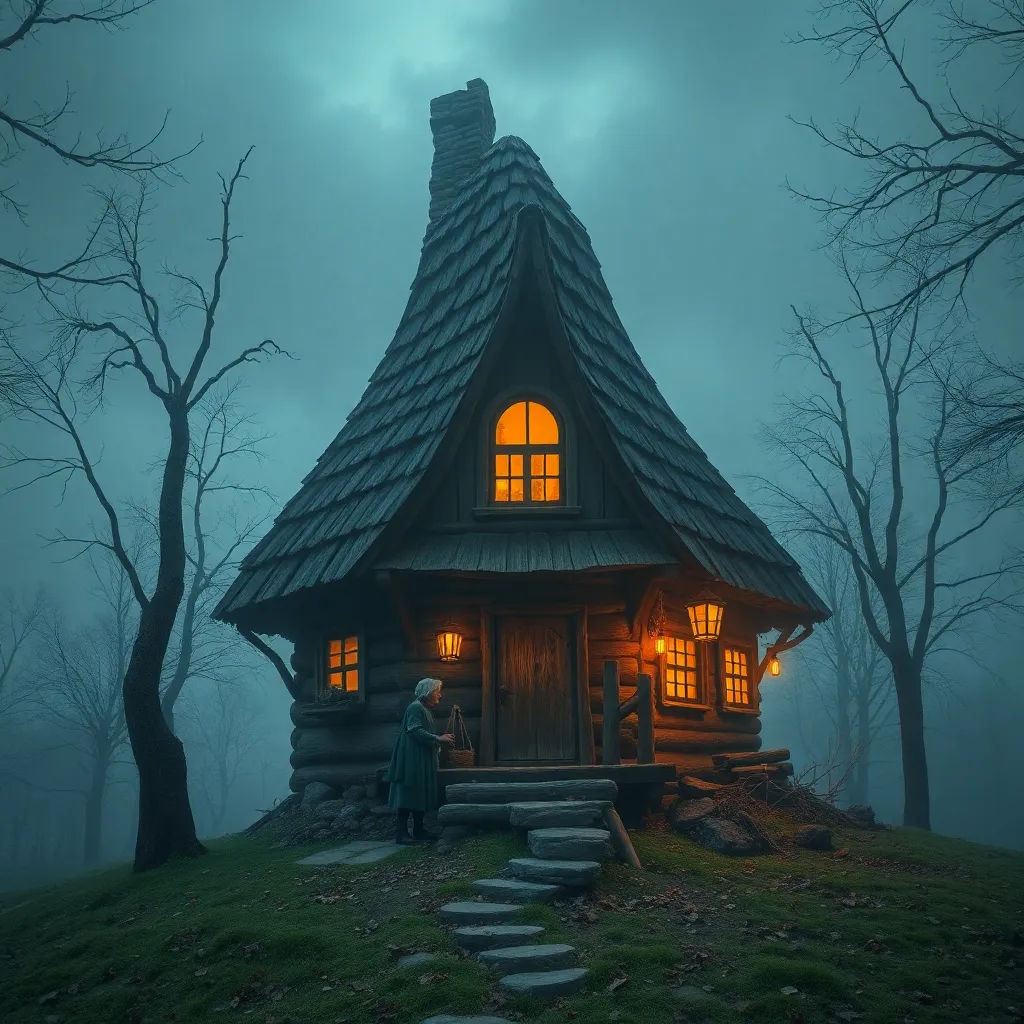The House on Chicken Legs: Understanding Baba Yaga’s Dwelling
I. Introduction
Baba Yaga is one of the most enigmatic and multifaceted figures in Slavic folklore. Often depicted as a witch with a fearsome demeanor, she is a complex character associated with both benevolence and malevolence. Central to her stories is her peculiar dwelling, famously known as the “house on chicken legs.” This unusual home not only serves as a backdrop for Baba Yaga’s adventures but also symbolizes deeper themes within the narratives. In this article, we will explore the origins of Baba Yaga, the characteristics of her extraordinary house, and the cultural significance of this iconic dwelling in folklore and beyond.
II. The Origins of Baba Yaga
Baba Yaga’s character has deep roots in Eastern European mythology, with her origins tracing back to ancient Slavic beliefs. She has been described as a crone, a goddess, and even a spirit of the forest. Over the centuries, her narrative has evolved, reflecting the changing societal values and fears of the cultures that tell her tales.
- Historical context: Baba Yaga’s character likely stems from prehistoric Slavic traditions, where she was associated with the wild and untamed aspects of nature.
- Evolution of her narrative: Initially portrayed as a goddess of death and rebirth, her image transformed into that of a witch, often serving as a mentor or antagonist to heroes in folklore.
- Significance in culture: Baba Yaga embodies the duality of nature—she can be nurturing yet terrifying, wisdom-bearing yet capricious.
III. Description of the House on Chicken Legs
The house on chicken legs is as captivating as its inhabitant. Descriptions of this dwelling can vary, but certain characteristics remain consistent across tales.
- Physical characteristics: The house is often described as a small, wooden structure perched atop chicken legs, which allows it to move and reposition itself. The legs are typically depicted as thin and spindly, giving the house an almost whimsical appearance.
- Symbolism of movement: The ability of the house to walk or move symbolizes the transient nature of reality, the fluidity of life, and the idea that nothing is permanent.
- Comparison with other mythical homes: Unlike the static homes of other mythical beings, such as the grand halls of gods or the enchanted castles of fairytales, Baba Yaga’s house reflects a more chaotic and unpredictable world.
IV. The Role of the House in Baba Yaga’s Stories
The house on chicken legs often plays a crucial role in the tales surrounding Baba Yaga, acting as more than just a setting.
- A character in its own right: The house is frequently described in ways that anthropomorphize it, suggesting it has its own personality and agenda.
- Functions in various tales: It can serve as a place of refuge, a site of trials for heroes, or a prison for those who anger Baba Yaga.
- Interaction with protagonists: The house often tests the courage and wit of those who seek Baba Yaga’s help, reflecting the challenges of navigating the unknown.
V. Cultural Interpretations of the House
The house on chicken legs is interpreted in various ways across different cultures and contexts.
- Regional variations: In some Slavic regions, the house may be depicted with additional features, such as windows that open to reveal eyes or a fence made of bones, highlighting local folklore traditions.
- Psychological interpretations: The house can represent the psyche, a space where one’s fears and desires coexist, mirroring the inner turmoil of the characters who encounter Baba Yaga.
- Symbol of transition: The house’s ability to move signifies transitions in life, the journey from innocence to experience, or the crossing between worlds.
VI. The House in Modern Adaptations
In contemporary culture, Baba Yaga and her house continue to inspire artists, writers, and filmmakers.
- Representation in literature: Modern authors have reimagined Baba Yaga’s character and her home, often exploring themes of empowerment and feminism.
- Influence on media: Films, television shows, and video games have introduced Baba Yaga to new audiences, often giving her a more nuanced portrayal that strays from traditional depictions.
- Reimagining the house: Artists have explored the idea of the house as a living entity, using various mediums to depict its whimsical yet eerie nature.
VII. The House as a Metaphor
The house on chicken legs serves as a potent metaphor in Baba Yaga’s stories, embodying several themes.
- Themes of isolation: The house’s solitary existence in the forest reflects feelings of loneliness and the quest for belonging.
- Relationship with nature: The connection between the house and the natural world emphasizes a symbiotic relationship, where human emotions intertwine with the wilderness.
- Lessons learned: Encounters with the house often lead to personal growth, teaching characters about resilience, courage, and the acceptance of life’s unpredictability.
VIII. Conclusion
In conclusion, the house on chicken legs is a significant element of Baba Yaga’s lore, enriching the tales that surround this iconic figure. It represents transformation, the complexities of nature, and the journey of self-discovery. Baba Yaga’s enduring legacy in Slavic folklore invites further exploration of her stories and the rich cultural tapestry from which they emerge. Through her house, we are reminded of the balance between fear and fascination, isolation and connection, and the mysteries that lie within the heart of folklore.
https://www.youtube.com/watch?v=3IQOeOS-z9M



